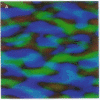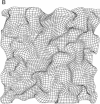Abstract
Orientation-selective cells in the striate cortex of higher animals are organized as a hierarchical topographic map of two stimulus features: (i) position in visual space and (ii) orientation. We show that the observed structure of the topographic map can arise from a principle of continuous mapping. For the realization of this principle we use a mathematical model that can be interpreted as an adaptive process changing a set of synaptic weights, or synaptic connection strengths, between two layers of cells. The patterns of orientation preference and selectivity generated by the model are similar to the patterns seen in the visual cortex of macaque monkey and cat and correspond to a neural projection that maps a more than two-dimensional feature space onto a two-dimensional cortical surface under the constraint that shape and position of the receptive fields of the neurons very smoothly over the cortical surface.
Full text
PDF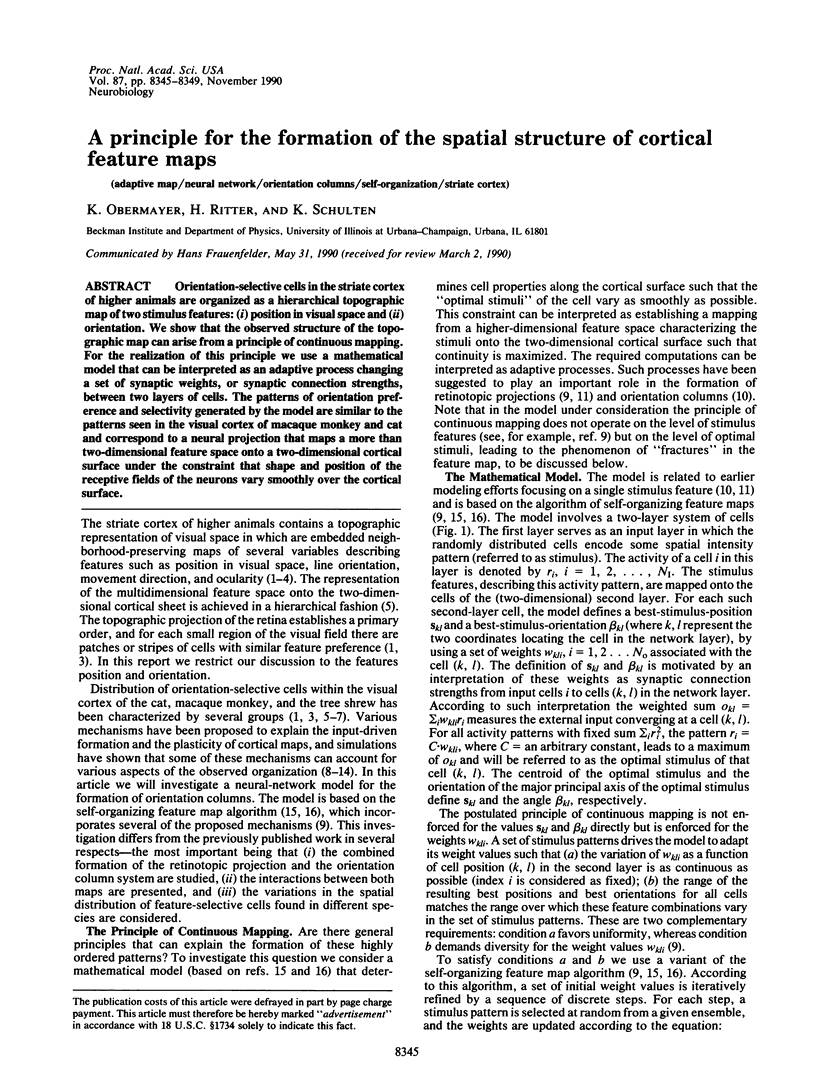
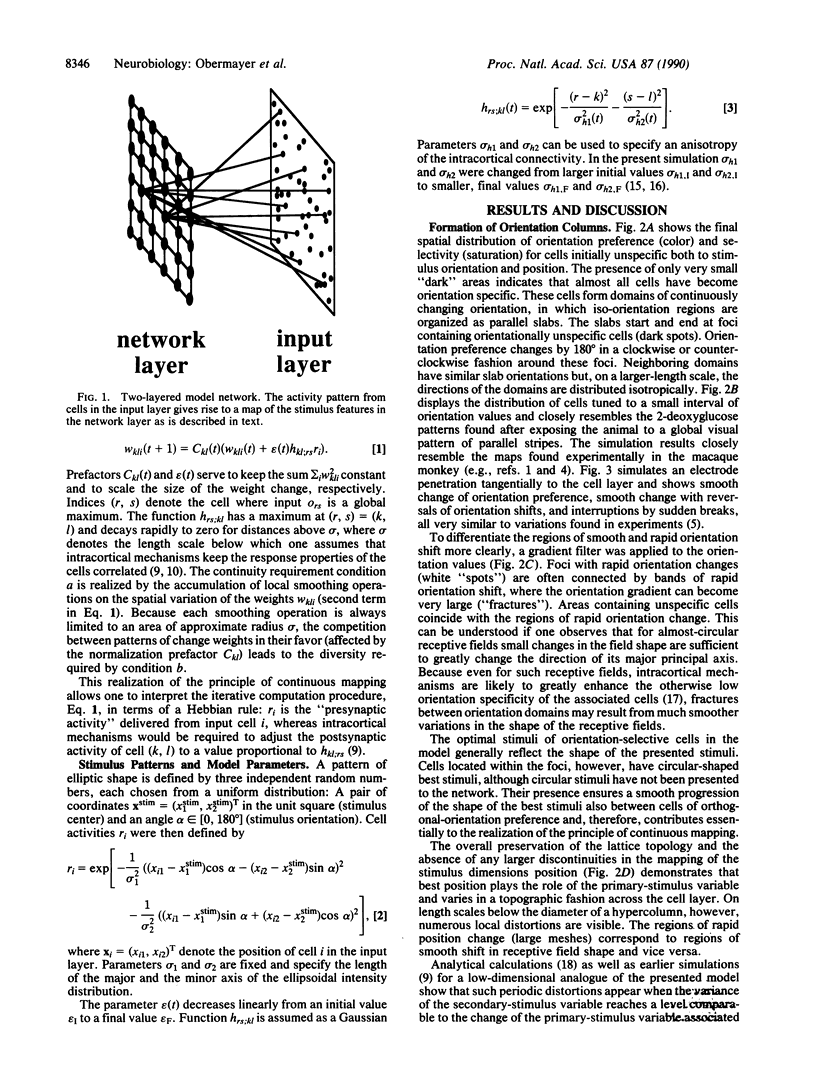

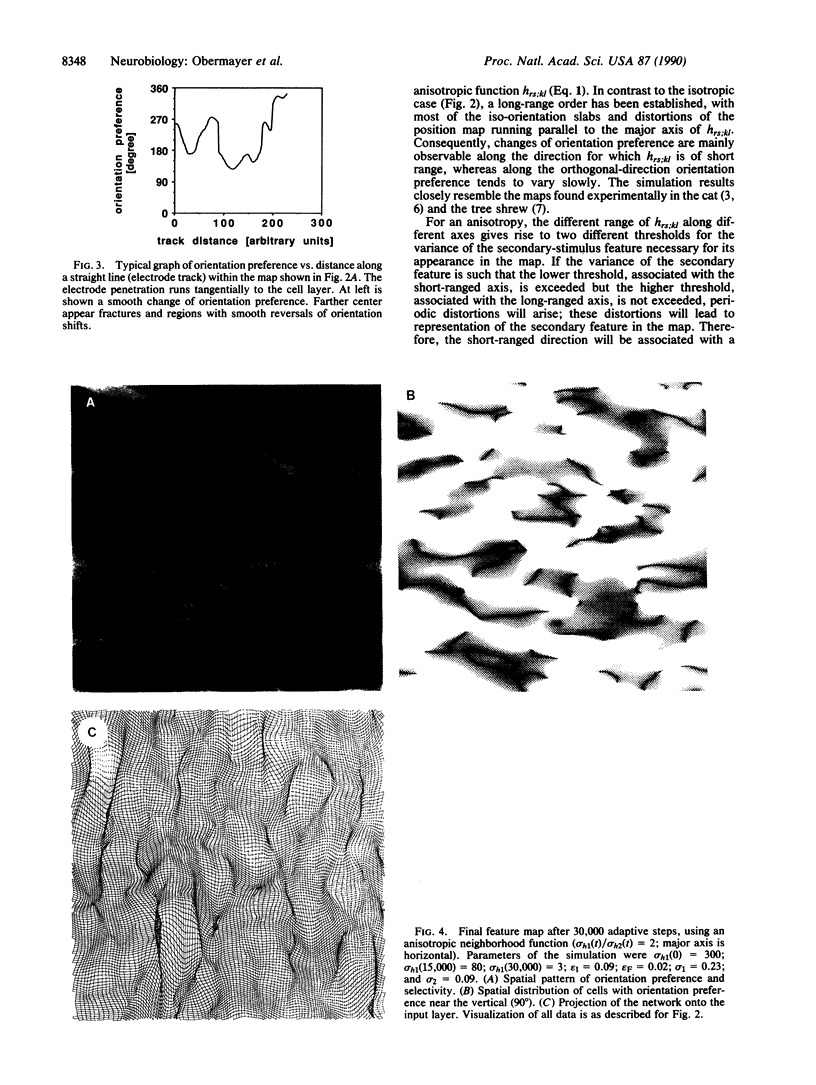
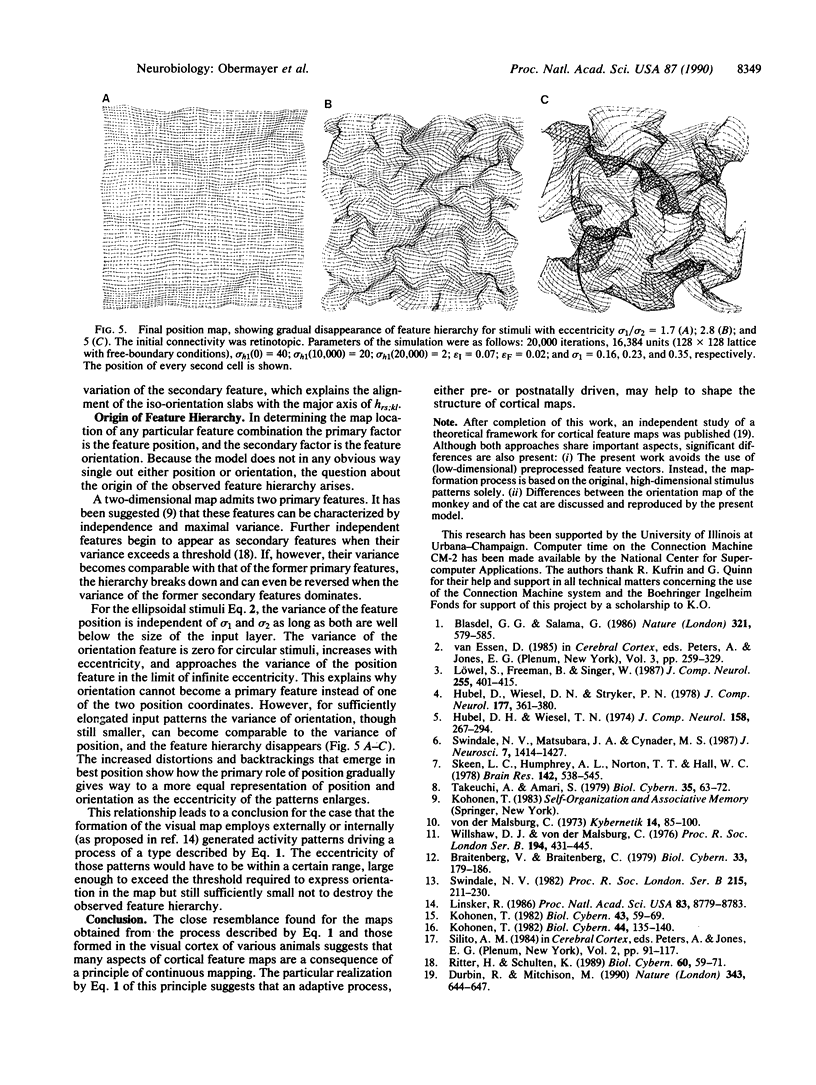
Images in this article
Selected References
These references are in PubMed. This may not be the complete list of references from this article.
- Blasdel G. G., Salama G. Voltage-sensitive dyes reveal a modular organization in monkey striate cortex. Nature. 1986 Jun 5;321(6070):579–585. doi: 10.1038/321579a0. [DOI] [PubMed] [Google Scholar]
- Braitenberg V., Braitenberg C. Geometry of orientation columns in the visual cortex. Biol Cybern. 1979 Aug 1;33(3):179–186. doi: 10.1007/BF00337296. [DOI] [PubMed] [Google Scholar]
- Durbin R., Mitchison G. A dimension reduction framework for understanding cortical maps. Nature. 1990 Feb 15;343(6259):644–647. doi: 10.1038/343644a0. [DOI] [PubMed] [Google Scholar]
- Hubel D. H., Wiesel T. N. Sequence regularity and geometry of orientation columns in the monkey striate cortex. J Comp Neurol. 1974 Dec 1;158(3):267–293. doi: 10.1002/cne.901580304. [DOI] [PubMed] [Google Scholar]
- Hubel D. H., Wiesel T. N., Stryker M. P. Anatomical demonstration of orientation columns in macaque monkey. J Comp Neurol. 1978 Feb 1;177(3):361–380. doi: 10.1002/cne.901770302. [DOI] [PubMed] [Google Scholar]
- Linsker R. From basic network principles to neural architecture: emergence of orientation columns. Proc Natl Acad Sci U S A. 1986 Nov;83(22):8779–8783. doi: 10.1073/pnas.83.22.8779. [DOI] [PMC free article] [PubMed] [Google Scholar]
- Löwel S., Freeman B., Singer W. Topographic organization of the orientation column system in large flat-mounts of the cat visual cortex: a 2-deoxyglucose study. J Comp Neurol. 1987 Jan 15;255(3):401–415. doi: 10.1002/cne.902550307. [DOI] [PubMed] [Google Scholar]
- Skeen L. C., Humphrey A. L., Norton T. T., Hall W. C. Deoxyglucose mapping of the orientation column system in the striate cortex of the tree shrew, Tupaia glis. Brain Res. 1978 Mar 10;142(3):538–545. doi: 10.1016/0006-8993(78)90915-0. [DOI] [PubMed] [Google Scholar]
- Swindale N. V. A model for the formation of orientation columns. Proc R Soc Lond B Biol Sci. 1982 May 22;215(1199):211–230. doi: 10.1098/rspb.1982.0038. [DOI] [PubMed] [Google Scholar]
- Swindale N. V., Matsubara J. A., Cynader M. S. Surface organization of orientation and direction selectivity in cat area 18. J Neurosci. 1987 May;7(5):1414–1427. doi: 10.1523/JNEUROSCI.07-05-01414.1987. [DOI] [PMC free article] [PubMed] [Google Scholar]
- Takeuchi A., Amari S. Formation of topographic maps and columnar microstructures in nerve fields. Biol Cybern. 1979 Nov 2;35(2):63–72. doi: 10.1007/BF00337432. [DOI] [PubMed] [Google Scholar]
- Willshaw D. J., von der Malsburg C. How patterned neural connections can be set up by self-organization. Proc R Soc Lond B Biol Sci. 1976 Nov 12;194(1117):431–445. doi: 10.1098/rspb.1976.0087. [DOI] [PubMed] [Google Scholar]
- von der Malsburg C. Self-organization of orientation sensitive cells in the striate cortex. Kybernetik. 1973 Dec 31;14(2):85–100. doi: 10.1007/BF00288907. [DOI] [PubMed] [Google Scholar]







